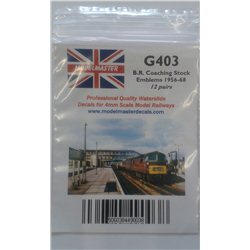There are a number of different options for attaching figures such as a horse and rider to a layout. Perhaps the...
No products
Product successfully added to your shopping cart
There are 0 items in your cart. There is 1 item in your cart.
Search Tips
What is a DMU?
DMU stands for Diesel Multiple Unit. DMUs are a type of train where the coaches have their own diesel-powered engines to propel them along negating the need for a locomotive at the head of the train. The driving controls on DMUs are situated in an integrally mounted driver's cab located at the ends of the leading and trailing vehicles facilitating the train to easily travel in either direction.
Although there were early experiments with diesel railcars, DMUs were first introduced in any great numbers during the later years of steam. Originally they were introduced as a modern and cost-effective way for the railway to operate branch-lines and suburban services. DMUs were cheaper, cleaner and more efficient to operate than steam-hauled trains, they didn't require a locomotive to run around the train at terminus stations, and being diesel, were less labour intensive to get started in the mornings. The new DMUs lower running costs and practicality was soon realised and DMUs have since played an increasing role in meeting rail transport needs through into the 21st century even on express and long distance services.
For modern rail operators, the main advantage of DMUs is that they can lengthen or shorten trains by simply adding or removing additional compatible DMUs. This tactic has a direct impact on running costs because shortening a train, by default, reduces the amount of motive power being used proportionately, therefore, reducing diesel consumption and wear.
Despite the clear advantages of DMUs, they are not hugely popular with customers who take longer journeys, the under-floor diesel engines create noise and vibration that isn't apparent when travelling on a traditional locomotive-hauled train. To this end, a few rail operators are now reintroducing locomotive-hauled services, but this is only cost-effective on routes with high passenger numbers meaning that DMUs are here to stay.
Click here to receive the tips weekly in your mailbox. You can unsubscribe at any time.








